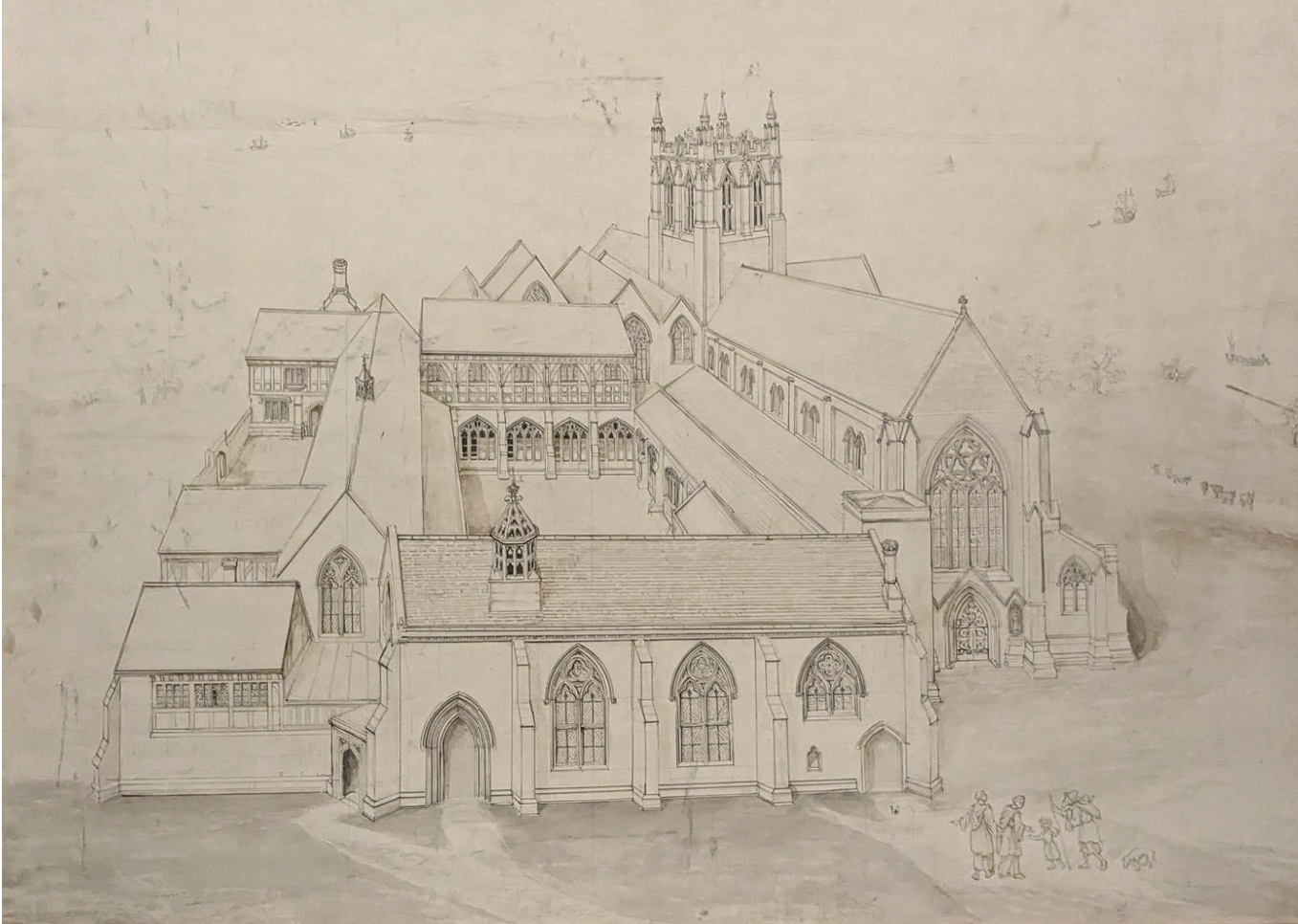It took over 200 years of building and rebuilding for Birkenhead Priory to reach its final form, sometime in the late 14th century. Like all Benedictine monasteries of the time it was laid out to a defined plan, which suited both the spiritual and domestic needs of the monks and their many visitors. The first buildings may have been of wood, but were soon replaced by sandstone which was available on the site.

The monastery buildings were ranged around a stone cloister, linking all parts of the Priory. This layout is slightly unusual, in that buildings and cloister were located to the north rather than the south of the Priory Church. The original Priory Church was replaced by a larger building sometime in the first half of the 13th century.
The oldest standing part of the Priory is the Chapter House. It dates from the time of the Priory’s foundation in the mid-12th century. Here, the monks met daily to deal with their domestic business and hear a chapter of the Rule of St Benedict, as they sat on stone benches lining the walls. A first floor was added in the 14th century. Although its original purpose is uncertain, this is known as the Scriptorium, and may have been used by the scribe monks copying documents.
The buildings on the northern and western sides of the cloister housed the Prior’s Lodgings and Chapel, a Guest Hall, Monks’ Parlour, Dormitories and Latrines. The Refectory, with its vaulted undercroft, dates from the 14th century. This undercroft may have been used for storage, but the elaborate vaulting suggests that it could have been used as another dining room. The buttery, where food and drink was stored, is next to the undercroft. The Priory kitchens were completely separate from the main complex, but nothing of them survives today.
Building the monastery would have been a massive task, involving many skilled craftsmen. These would have been itinerant workers, travelling round the country either individually or in groups. They included masons, carpenters, blacksmiths and tile-makers. By the 14th century some of the buildings had decorated floor tiles and stained glass, reflecting the fact that the Priory was not as poor as in earlier days. In many monasteries, the carved stonework inside the main buildings was painted in bright colours, to add to the decorative effect.